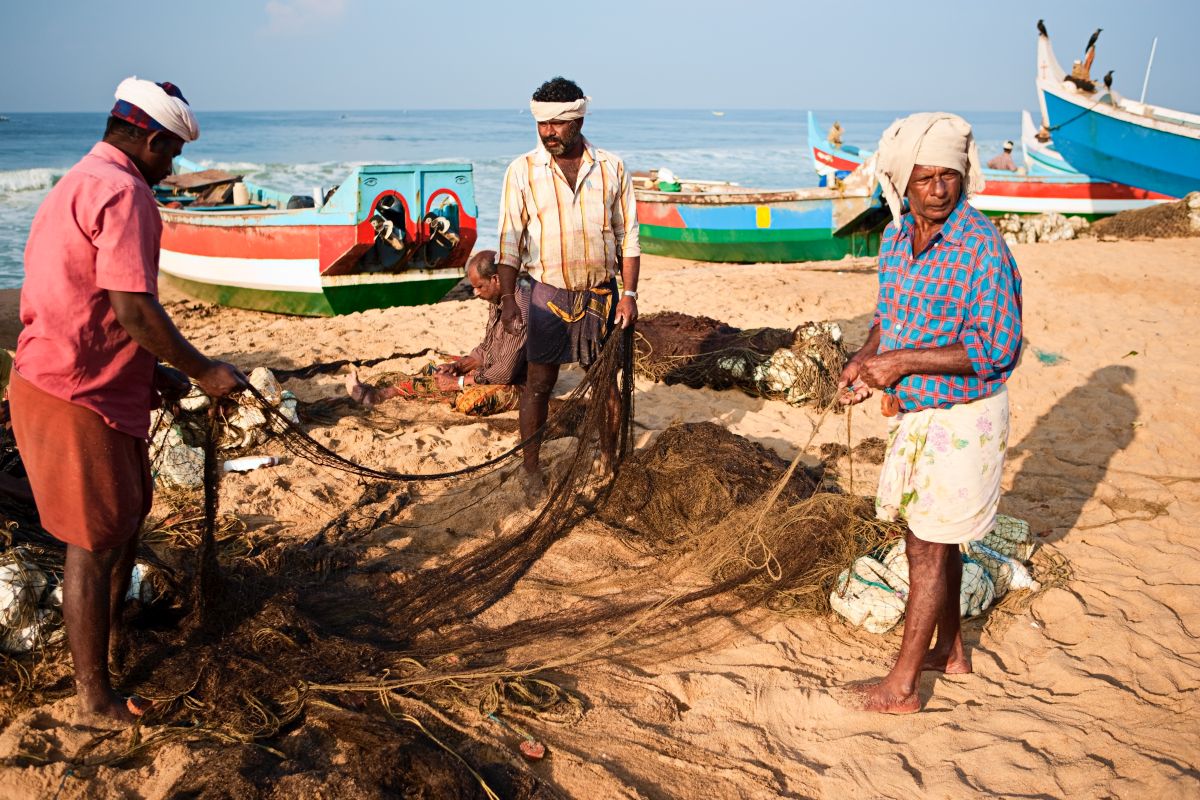Section 144 imposed on coastal areas of Puducherry as cyclone ‘Michaung’ approaches
In order to prevent any loss of life or property, the district administration restricted the movement of all persons on the coastal areas.
Much before climate change became a big issue, several studies had documented that nonmechanized traditional fishing communities were suffering a loss of livelihood due to the steady advance of mechanised and capital-intensive fishing.

Photo: Getty Images)
Many people think of coastal areas mainly in terms of beautiful beaches and tourist destinations, but people who live there are painfully aware of the many problems and risks which have been increasing in times of climate change.
In fact, climate scientists regard coastal communities to be among those that will be most at risk, whether in terms of rise in sea level, increased seashore erosion or higher risks from cyclones.
What is more, the poorer communities with their fragile shelters and threatened livelihoods are at greater risk, a situation made worse by several injustices from which they have increasingly suffered. Coastal areas have always constituted ecologically important and sensitive zones.
Advertisement
This sensitivity has increased in recent decades of climate change and pollution as well as immense biodiversity loss in oceans and coastal areas. On the one hand coastal areas are exposed to more destructive disasters due to climate change related factors.
On the other, several changes in coastal areas can also increase their vulnerability to disasters. The people of coastal areas including fisherfolk are the most adversely affected by all this, but the poorer and more vulnerable among them are also threatened by a complex set of economic and related technological changes that seek to marginalise them.
Much before climate change became a big issue, several studies had documented that nonmechanized traditional fishing communities were suffering a loss of livelihood due to the steady advance of mechanised and capital-intensive fishing.
As these concerns were not addressed at the time, the earliest inhabitants of coastal areas had to suffer from the double whammy of socio-economic injustice as well as climate change.
In several inter-related ways, the powerful forces which threaten the more vulnerable people are also responsible for inflicting environmental harm, threatening biodiversity, and increasing the exposure of coastal zones at a time when disasters like cyclones are becoming more destructive due to climate change and related factors.
Hence a kind of vicious circle has trapped several weaker sections, and they need to be helped to come out of this. They have very good knowledge of coastal areas. Several of these brave persons routinely save tourists from drowning or other risks.
In disaster situations, they perform courageous rescue actions in a way others are not capable of. Clearly their knowledge and skills should be better used but they face increasing neglect and marginalisation.
At the same time, various governments are taking up important protective programmes such as the construction of cyclone shelters, improved warning systems for adverse weather and disasters including tsunamis and planning better rescue efforts.
People of coastal areas should extend their whole-hearted cooperation to these protective programmes but at the same time they should prepare for continuing peaceful resistance to those activities of powerful forces which inflict displacement or other adverse impacts on coastal communities, endanger environment and biodiversity and/or make the area more vulnerable to disaster-related destruction.
It needs to be realized that even activities taken up further away from the coast can adversely impact the ecology of coastal areas and lives of coastal communities. For example, if a series of dam projects taken up in upstream rivers can greatly reduce the inflow of freshwater at and near its meeting point with the sea. This can result in saltwater intrusion in coastal villages and settlements.
There can be serious adverse impacts relating to several expressway/highway projects, ports, big shrimp farming projects as well as changes in fishing technology and systems which have been widely discussed in recent times and sometimes led to opposition movements, small or big.
Tourism can be linked in thoughtful ways to promoting livelihoods without causing serious environmental harm, but often such concerns do not get adequate attention with the result that several poorer coastal communities have suffered harm due to distorted forms of tourism.
Particular, their work and living places are eyed by big tourism operators for their hotels and resorts. At times, even relief and rehabilitation projects have been implemented in such ways as to result in longerterm harm to poorer coastal people.
It is not difficult to find examples of poorer people, for whom the coast has always been their home and who have only known life by the sea, getting marginalized in their homeland while big operators gain dominance in not just infrastructure development but even sectors like tourism and fisheries.
Such patterns of development can be seen broadly in most coastal areas, although of course there are several local, special features as well. Various sporadic struggles also have several common points.
It is important for them to have more unity and prepare a common agenda acceptable to all or most of them which is based on justice and protection of vulnerable groups, justice for women within these communities, protection of environment and biodiversity and protection from disasters.
The preparation of such an agenda can contribute much towards a policy framework for coastal areas, and this can be taken up with the authorities at various levels. Apart from aspiring for broader policy changes, various constructive initiatives can be suggested for providing immediate relief also.
The greater the unity and common agenda, the more it is likely that their voice will get due attention at the political and administrative levels.
Advertisement